Zentara Reference series Cables
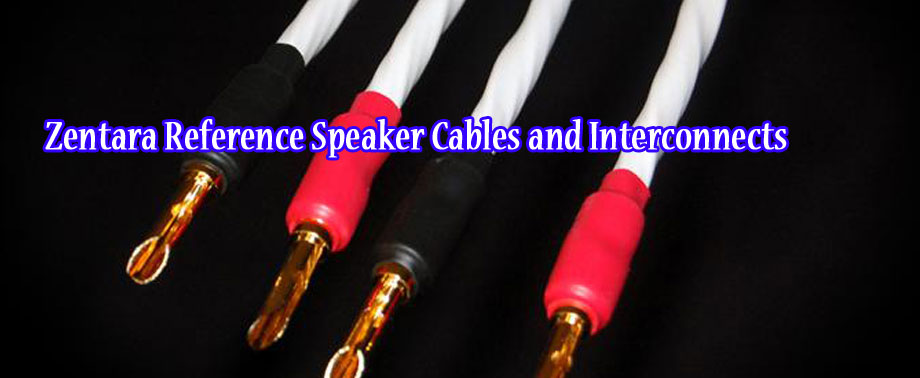
 Some months back I reviewed Zentara Cables’ IC-4 interconnects and TF-8 speaker cables, and I liked what they did in my system very much.In that review I concluded, “They’ve added genuine sonic benefits to my system at a price point that makes sense with my other components.” They offered really good sound, solid construction, and – at about $500 each for the interconnects or speaker cables – a good value. Comparing them to my own cables I wrote, “…what comes through is a little more detail, a little more resolution, a little more information at the frequency extremes, and with those qualities comes more music,” A compelling package, all the way around.
Some months back I reviewed Zentara Cables’ IC-4 interconnects and TF-8 speaker cables, and I liked what they did in my system very much.In that review I concluded, “They’ve added genuine sonic benefits to my system at a price point that makes sense with my other components.” They offered really good sound, solid construction, and – at about $500 each for the interconnects or speaker cables – a good value. Comparing them to my own cables I wrote, “…what comes through is a little more detail, a little more resolution, a little more information at the frequency extremes, and with those qualities comes more music,” A compelling package, all the way around.
In the intervening months I had the opportunity to review some truly expensive cables, and while the pricier wires didn’t make the Zentaras sound bad per se, they did reveal a little – and I mean a very little – comparative coarseness at the top of the Zentara’s frequency spectrum. I think I used the term “a little hairy-chested” to describe the slight high-frequency dispersion I encountered in a direct comparison. One of those speaker cables cost almost $4500 – nine-times the price of the Zentaras. For that kind of money that other set of cables had better sound pretty damned good, shouldn’t they? (For that kind of money they should also walk the dog and vacuum the house.) But by no means were those pricey wires nine-times-the-price better than the Zentaras, not by a long shot. If I hadn’t done a direct back-to-back comparison I might never have noticed that slight rough edge, and with the Zentaras installed I certainly wasn’t listening to my hi-fi thinking something was amiss. I was always perfectly happy listening to Zentara IC-4 and TF-8 cables, and in fact, I really liked them. On the whole, I stand by my original review that they’re a really good product as well as a solid value.
Nevertheless, the IC-4 interconnects and TF-8 speaker cables are Zentara’s entry-level cables: very competent sounding and well-constructed, but also the starting point in the Zentara lineup. Company owner and engineer Veng Neng Que also has a higher line of cables, albeit at a more expensive – though still reasonable- price point. Impressed by his first effort, I was definitely interested to hear what he could accomplish if he stretched out a little more. So when he contacted me with an offer to listen I agreed to review the Zentara Reference interconnects and matching Reference speaker cables.
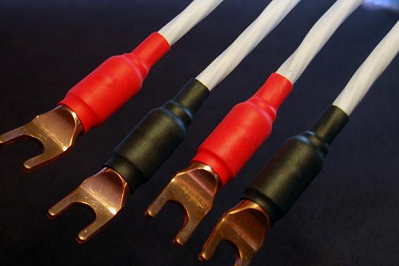
The Reference speaker cables feature ‘single crystal’ copper and gold-plated spades wrapped in what seems like very rugged insulation. A 10-foot single-wire pair is priced at $1,050. Veng Neng Que is a little cagey about some of his technical features, but cable makers always seem to be engaged in a certain amount of alchemy, so I didn’t press it. The Reference speaker cables have the same high-quality basic-black look as the TF-8s, although with tighter, more compact insulation. The simple aesthetic is a positive thing in my book. Maybe I’m being a Luddite, but dressing up cables in colorful fancy jackets or packaging them in exotic hand carved wooden boxes will make the cables more expensive but it doesn’t do a damned thing to make them sound better. It’s the fishing lure trap: The more extravagant looking the plastic frog, the more fishermen it catches at the sporting goods store. Whether or not it catches fish – or in this case, accurately transmits an audio signal – is totally beside the point. The Zentara Reference speaker cables feel substantial and well built, but they’re not dressed to win the sexiest cable contest. That’s a feature I appreciate.
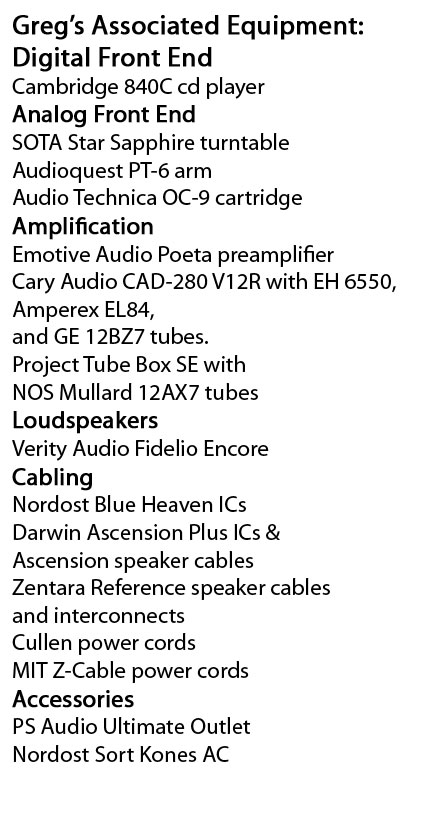
Before I get to the interconnects, this is a good place to point out that purchasing cables – or any component really – from a small boutique manufacturer like the Zentara Cables is by nature placing your faith in the vision and technical philosophy of an individual designer. Buying a Shindo amplifier is less the acquisition of an electronic component and more an investment in the design and voicing preferences of the late Ken Shindo. It’s not design by committee; it’s more personal than that. I mention this because from time to time you’ll encounter a product that at first glance just seems a little unusual, and the first question to ask is “why?” Generally the designer will have a well thought out reason for his method, and what may initially seem a little off-beat seems perfectly reasonable with a little explanation.
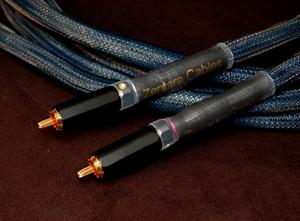
This brings us back to the Zentara Reference interconnects. The interconnects also feature ‘single-crystal’ copper, as well as very high qualifyFurutech rhodium-plated locking RCA jacks. A one-meter pair is $950. In keeping with Zentara’s general aesthetic they’re still basic black. The interconnects’ slightly unusual feature is the almost inch-thick round foam insulation which immediately called to mind a soft overfed snake or the Stay-Puft Marshmallow Man. Again not wanting to reveal too much proprietary information, Neng’s explanation for the oversized insulation includesphysically and substantially separating the positive and negative wires, as well as enhanced vibration damping and improved cable flexibility. He also stated that the thickness of the cable reduces stress on the individual wires in tight bends.
I would describe them – physically, not sonically – as fat and soft (I can relate), and while the wires inside may be well protected, and contrary to Neng’s explanation, I personally found them to be a little unwieldy to maneuver through tight spaces and right angles in an equipment cabinet. I use all the little holes and channels in my cabinet as a way of keeping wires from crossing each other. I was able to get them all hooked up properly, but it took some finagling. Still, I don’t think twice about moving an eighty-pound amp around when I need to, so in the grand scheme of things making adjustments to suit the physical space requirements of some cables really isn’t the end of the world.Of course, like any other cables, once they’re in, they’re in.
The Reference interconnects are as nicely made as the rest of the Zentara cables I’ve used. The Furutech RCA jacks feel substantial and lock like a vice. From a hookup perspective they work like any other cables, they just take up a little more space. As I said earlier, when you buy components from a boutique manufacturer you’re usually buying the engineering choices of an individual. In this case, Neng felt this combination of wire and insulation met the goals he was trying to reach.
Who cares? How do they sound?
Well, pretty darned good.
Cables are, of course, just one component in the signal chain. The best we can generally ask of them is that they transmit the signal accurately between components and then to the speakers without making a mess of it. They’re the only component where we insist that they do as little as possible: everyone’s goal is to eliminate any colorations or sonic artifacts that might be a byproduct of the wires.
Nevertheless, all cables have some sonic signature, however slight. With good cables these sonic artifacts often come down to slight variations on vanilla, but they are discernable and allow listeners the opportunity to tailor the sound of their systems to their own tastes.
Some cables have great clarity on the instruments, but somehow leave the space around them seeming very dark. By contrast, one of the qualities I admired most in the TF-8 speaker cables and IC-4 interconnects was the way they illuminated the whole soundstage. Some of that, I’m sure, was just better retrieval of previously unheard ambient details, but there was a whole-cloth daylight quality to the soundstage that I really liked. It was an admirable effect, and I’m pleased to report that it’s shared in the Reference series cables. Beyond that, the Reference cables offer superior resolution and detail over the TF-8 and IC-4 cables.
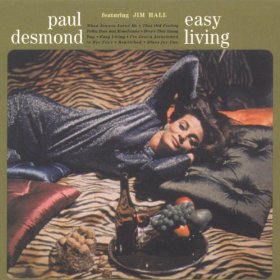 Paul Desmond’s alto on a Japanese import CD of Easy Living (RCA, 1964) has sweet breathy timbre while Jim Hall’s guitar is smooth overall, but with just a hint of abrasion on the strings. Without a highly resolving system, including the cables, that little bit of grunge would just sound like recording distortion (as it did in my car). It’s not. It’s guitar pickup distortion reproduced by the guitar amplifier that in turn made it onto the tape. This recording is not the last word in imaging, with the guitar and saxophone hard panned to the left and right respectively, but bass and drums in the center fill have respectable depth and sound quality of the instruments is first rate. The cymbals have appropriate splash and sizzle when called for, and the bass, split among Gene Wright, Gene Cherico, and Percy Heath has good wooden grip, even if its volume is a little recessed in the mix. My impression of the Zentara References in this presentation was that they just made everything a little clearer than it was before: a little more air, resolution, and clarity.
Paul Desmond’s alto on a Japanese import CD of Easy Living (RCA, 1964) has sweet breathy timbre while Jim Hall’s guitar is smooth overall, but with just a hint of abrasion on the strings. Without a highly resolving system, including the cables, that little bit of grunge would just sound like recording distortion (as it did in my car). It’s not. It’s guitar pickup distortion reproduced by the guitar amplifier that in turn made it onto the tape. This recording is not the last word in imaging, with the guitar and saxophone hard panned to the left and right respectively, but bass and drums in the center fill have respectable depth and sound quality of the instruments is first rate. The cymbals have appropriate splash and sizzle when called for, and the bass, split among Gene Wright, Gene Cherico, and Percy Heath has good wooden grip, even if its volume is a little recessed in the mix. My impression of the Zentara References in this presentation was that they just made everything a little clearer than it was before: a little more air, resolution, and clarity.
When I originally reviewed the TF-8 and IC-4 cables I used the Grateful Dead’s fantastic Closing of the Winterland, December 31st, 1978 recording (four HDCDs, Grateful Dead Records) so it seemed appropriate to revisit the album to review the Zentara Reference series. The soundstage is still huge, with lots of depth and instrument separation, but with even better clarity. One added detail I didn’t hear with the original set of wires, and that was clear with the Reference series, is the background harmonizing between Jerry Garcia and Donna Godchaux on “Good Lovin’.” Donna’s yelping is usually overpowering (and often out of key), but in this case she shows admirable restraint for a few bars and Jerry’s reedy vocal note is clearly audible in the mix just to the right of her on stage. It would be easy for these two voices to collapse into a lump, but that was not the case with the Zentara Reference cables in my system.
Obviously I haven’t heard every cable ever made so I’m not prepared to say that the Zentara Reference speaker cables and interconnects are the best cables ever. That would be a highly subjective and downright foolish claim. But I am willing to say that the Reference cables deliver higher resolution and clarity than Zentara’s IC-4 and TF-8 wires, as they should for their higher price. I’m also willing to say that they are almost as refined as the most expensive cables I’ve ever had in my system, which were many times the price. And, the Zentaras also illuminate the soundstage better than any cable I’ve had in my system, including those uber-cables, which were much darker in character.
Now just to be clear, we’re talking about small, subtle degrees of separation. This isn’t smack-yourself-in-the-forehead epiphany stuff here: more like an opportunity to fine-tune your system with cables that accentuate the sound qualities you, the listener, value the most. Cable choices are important to the quality of a system, even if that choice is highly subjective to the listener’s preferences. It’s always good to have more high-quality, well executed, strong-value products to choose from, especially in cables, which seem to suffer from more marketing chicanery than any other component. When you get down to it, the Zentara Reference cables have a lot going for them: They’re a high-quality, well-executed product, and by the standards of the day they’re still a bit of a bargain.
I’m going back to the original conclusion I wrote for the TF-8 and IC-4 cables: “…what comes through is a little more detail, a little more resolution, a little more information at the frequency extremes, and with those qualities comes more music.” That applies even more so to the Zentara Reference series of cables. If you’re in the market, give them a listen. You might like what you hear.


Product Specifications:
Reference II Speaker Cables:
99.9999 (6N) copper wire
Multi-conductors in a proprietary “Tubular Helical” braid design
Gold-platted spade connectors
Teflon Insulation
Price: $1050.00 per 8-ft pair
Reference Interconnects:
“Single Crystal” copper wire
Multi-core conductors
Furutech rhodium plated locking RCA jacks
Polymeric foam fiber insulation
Price: $950.00 per meter
Manufacturer Contact
Zentara Cables
Veng Neng Kue, Owner
734-674-6135
Email: Info@ZentaraCables.com
Website: www.zentaracables.com
Stereo Times Masthead
Publisher/Founder
Clement Perry
Editor
Dave Thomas
Senior Editors
Frank Alles, Mike Girardi, Russell Lichter, Terry London, Moreno Mitchell, Paul Szabady, Bill Wells, Mike Wright, and Stephen Yan,
Current Contributors
David Abramson, Tim Barrall, Dave Allison, Ron Cook, Lewis Dardick, John Hoffman, Dan Secula, Don Shaulis, Greg Simmons, Eric Teh, Greg Voth, Richard Willie, Ed Van Winkle, and Rob Dockery
Site Management Clement Perry
Ad Designer: Martin Perry





Be the first to comment on: Zentara Reference series Cables